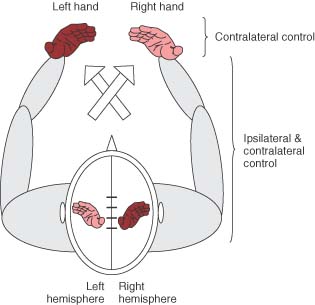
From page 95, 96 of "The Protean Body"
http://www.amazon.com/Protean-Body-Rolfers-Human-Flexibility/dp/0060905522
Another cultural myth is that body movement occurs only through the contraction of muscles. the logical corollary of that dogma is that the lots of movement, especially the strenuous movement required in sports, means lots of contraction. From that standpoint, body use tends toward deterioration, hardening, and shortening of the soft tissue, because the joints are constantly being pulled together and distorted.
Ida discovered that body movement can also occur by lengthening a muscle. For example, it is possible to learn to move one's leg so that the quadriceps lengthen in concert with the psoas's lengthening and dropping back toward the read wall of the belly, to rotate the head without shortening the muscles of the neck, to lift the forearm without shortening the biceps. I said to Ida one day. "How in the hell can you raise your forearm without shortening your biceps?" "Watch" she retorted. She lay a man down on a table, instructing him to move his elbow straight in the and out from his side. We all observed that the muscles did indeed shorten. She began to work on the fasciae of this arm and shoulder. Ten minutes later, when he repeated the original movement, there was no contraction. The elbow was moving by the lengthening of the tissues -- in both flexors and extensors -- in the upper arm.
The actually explanation of this kind of movement is still unclear. But there seem to be three states of muscular activity: (1) a state of balance, tone, or rest; (2) a state of contraction; and (3) a state in which the muscle lengthens and falls back toward the center of the body -- e.g., the biceps lengthens and falls back toward the humerus to raise the forearm. The latter kind of movement is not easy to come by. It begins to happen in the later session of Rolfing,and with structural patterning, but i takes a good about of time, awareness, and change of mound to build that kind of movement into one's habitual uses of the body.
The consequences of the shirt to the third kind of movement are radical. imagine how many times a day you stand up and sit down, how many hours you spend walking here and there. Every single time you engage in those activities you have shortened you body and consumed energy in the shortening. You have been contributing to the deterioration of your body moving in the earth's field. Now imagine a shirt where all this movement involves an initial lengthening of connective tissue. Each time you move you are increasing the ease in your body, enhancing the flow of energy. Movement, rather then perfect passivity, becomes the nourishing source of the the body.



